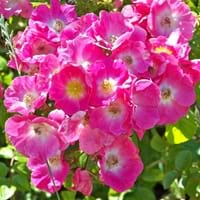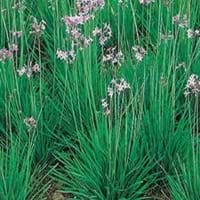Life Span
Annual and Perennial
Annual
Type
Perennial
Bulb or Corm or Tuber
Origin
Hybrid origin
South Africa
Types
it is a type of rose
Not Available
Number of Varieties
Not Available
Habitat
Not Available
Tropical regions, Well Drained, Wet forest
USDA Hardiness Zone
5-8
7-11
Sunset Zone
A1, A2, A3, H1, H2, 1a, 1b, 2a, 2b, 3a, 3b, 4, 5, 6, 7, 8, 9, 10, 11, 12, 13, 14, 15, 16, 17, 18, 19, 20, 21, 22, 23, 24
21,22
Habit
Vining/Climbing
Clump-Forming
Minimum Width
Not Available
Flower Color
White, Pink
White, Light Pink, Lavender
Flower Color Modifier
Not Available
Bicolor
Fruit Color
Non Fruiting Plant
Yellow green
Leaf Color in Spring
Dark Green
Blue Green, Gray Green
Leaf Color in Summer
Dark Green
Light Green
Leaf Color in Fall
Dark Green
Several shades of Green
Leaf Color in Winter
Light Green
Light Green
Leaf Shape
Oval
Long Narrow
Plant Season
Summer
Summer
Sunlight
Full Sun, Partial Sun
Full Sun
Growth Rate
Medium
Medium
Type of Soil
Loam, Sand
Loamy, Well drained
The pH of Soil
Acidic, Neutral
Neutral
Soil Drainage
Well drained
Well drained
Bloom Time
Summer, Late Summer
Early Summer, Summer
Tolerances
Drought
Dry soil, Shade areas
Where to Plant?
Container, Ground, Pot
Ground
How to Plant?
Divison, Seedlings
Budding, From bulbs
Plant Maintenance
Medium
Low
Watering Requirements
Water Deeply, Water in morning to avoid prompting diseases
Keep ground moist, Never Over-water
In Summer
Lots of watering
Moderate
In Spring
Moderate
Average Water
In Winter
Average Water
Less Watering
Soil pH
Acidic, Neutral
Neutral
Soil Type
Loam, Sand
Loam, Sand
Soil Drainage Capacity
Well drained
Well drained
Sun Exposure
Full Sun, Partial Sun
Full Sun
Pruning
Prune after flowering, Remove damaged leaves, Remove dead branches
Cut out old flower stalks, Prune ocassionally
Fertilizers
Fast release fertilizer, Fertilize in early spring, Fertilize three times a year
fertilize in fall, Nitrogen
Pests and Diseases
Aphids, Black Spot, Caterpillars, Downy mildew, glasshouse red spider mite, Insects, Leaf Hoppers, Powdery mildew, rose leaf-rolling sawfly, Rust, Scale
Bacterial leaf spot, Nematodes, Purple Blotch, Red blotch, Seedcorn maggot
Plant Tolerance
Drought
Dry soil, Shade areas
Flower Petal Number
Single
Single
Fragrant Bark/Stem
No
Yes
Foliage Texture
Medium
Medium
Foliage Sheen
Glossy
Matte
Attracts
Not Available
Bugs, Flying insects, Insects
Allergy
Not Available
Dermatitis, Pain and fatigue
Aesthetic Uses
Showy Purposes, Used for decorating walls, fences, gates, hedges, etc.
Showy Purposes, Used in parkland
Beauty Benefits
Perfumes
Acne, For treating wrinkles, Making cosmetics, Removes pimples
Environmental Uses
Air purification
Indoor Air Purification, Insect Repellent
Medicinal Uses
No Medicinal Use
Acne, Aging, Antidepressant, epilepsy, Nerve pain, Obesity, Vomiting
Part of Plant Used
Flowers, Whole plant
Bulbs
Other Uses
Used as Ornamental plant
Animal Feed, Can be made into a herbal tea, Oil is used in mosquito repellents, Use in Chinese herbology, Used as Ornamental plant, Used for its medicinal properties
Used As Indoor Plant
Yes
No
Used As Outdoor Plant
Yes
Yes
Garden Design
Cutflower, Feature Plant, Groundcover, Hedges, Mixed Border, Rock Garden / Wall, Topiary / Bonsai / Espalier, Vine
Edible, Herb / Vegetable
Botanical Name
ROSA 'American Pillar'
TULBAGHIA violacea
Common Name
Climbing Rose, Rambling Rose
Society Garlic
In Hindi
Climbing Rose
लहसुन
In German
Kletterrose
Knoblauch
In French
escalade Rose
Ail
In Spanish
Rose que sube
Ajo
In Greek
αναρρίχηση Rose
σκόρδο
In Portuguese
Rosa de escalada
alho
In Polish
Climbing Rose
czosnek
In Latin
Rosa scandere
allium
Phylum
Magnoliophyta
Magnoliophyta
Class
Magnoliopsida
Liliopsida
Family
Rosaceae
Liliaceae
Clade
Not Available
Monocotyledonous
Tribe
Not Available
Not Available
Subfamily
Not Available
Lilioideae
Number of Species
Not Available
Importance of Climbing Rose and Society Garlic
Want to have the most appropriate plant for your garden? You might want to know the importance of Climbing Rose and Society Garlic. Basically, these two plants vary in many aspects. Compare Climbing Rose and Society Garlic as they differ in many characteristics such as their life, care, benefits, facts, etc. Every gardener must at least have the slightest clue about the plants he wants to plant in his garden. Compare their benefits, which differ in many ways like facts and uses. The medicinal use of Climbing Rose is No Medicinal Use whereas of Society Garlic is Acne, Aging, Antidepressant, epilepsy, Nerve pain, Obesity and Vomiting. Climbing Rose has beauty benefits as follows: Perfumes while Society Garlic has beauty benefits as follows: Perfumes.
Compare Facts of Climbing Rose vs Society Garlic
How to choose the best garden plant for your garden depending upon its facts? Here garden plant comparison will help you to solve this query. Compare the facts of Climbing Rose vs Society Garlic and know which one to choose. As garden plants have benefits and other uses, allergy is also a major drawback of plants for some people. Allergic reactions of Climbing Rose are Not Available whereas of Society Garlic have Dermatitis and Pain and fatigue respectively. Having a fruit bearing plant in your garden can be a plus point of your garden. Climbing Rose has showy fruits and Society Garlic has no showy fruits. Also Climbing Rose is not flowering and Society Garlic is not flowering . You can compare Climbing Rose and Society Garlic facts and facts of other plants too.





